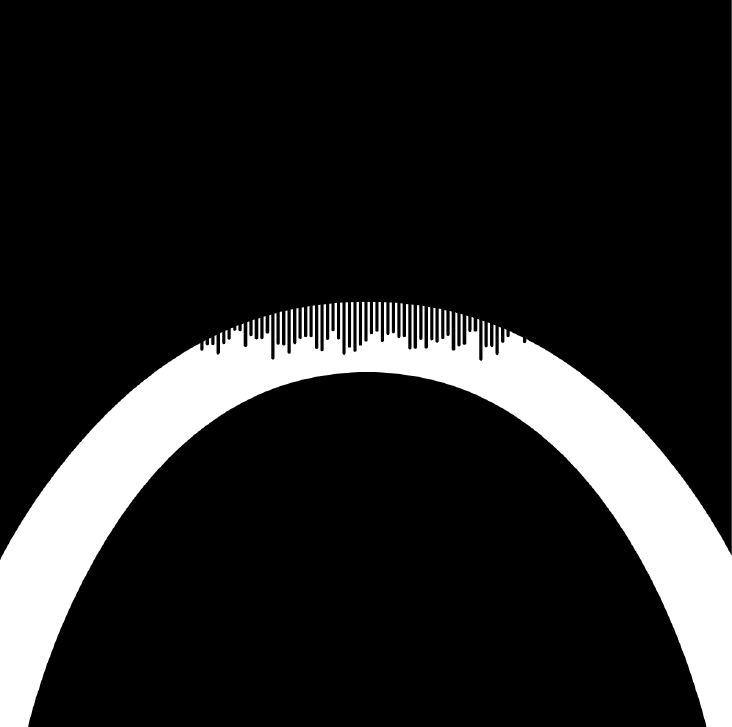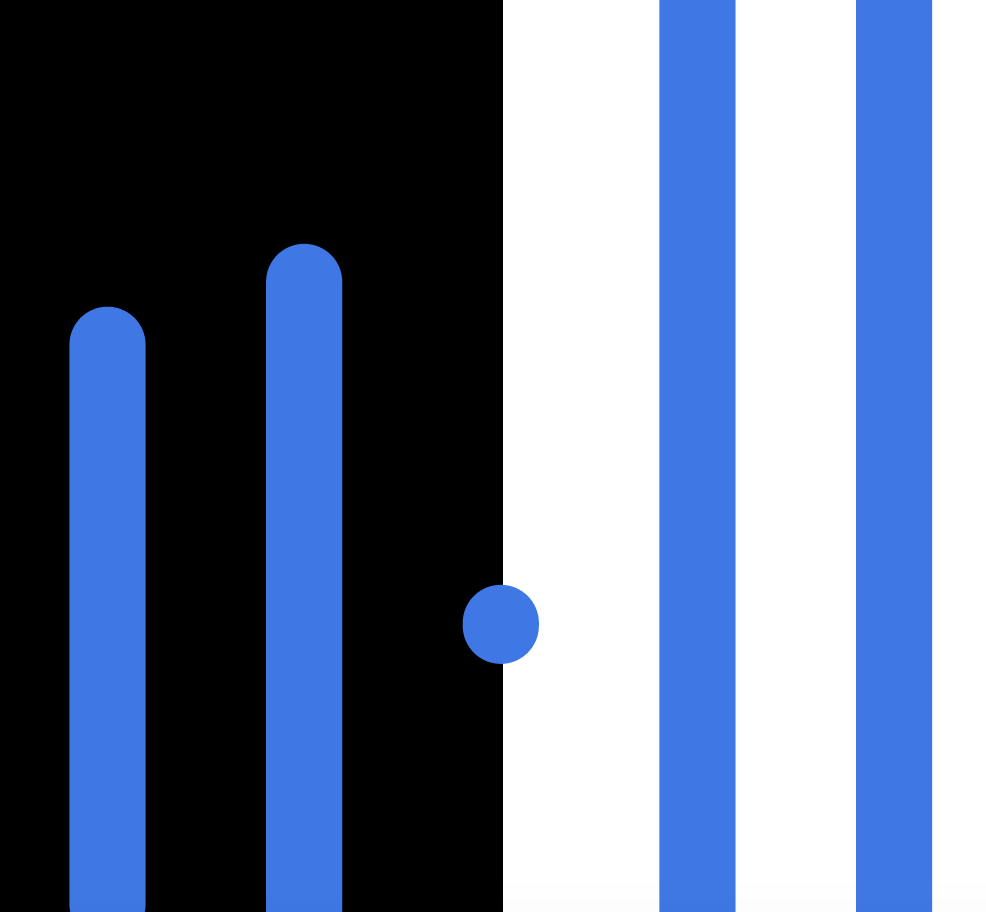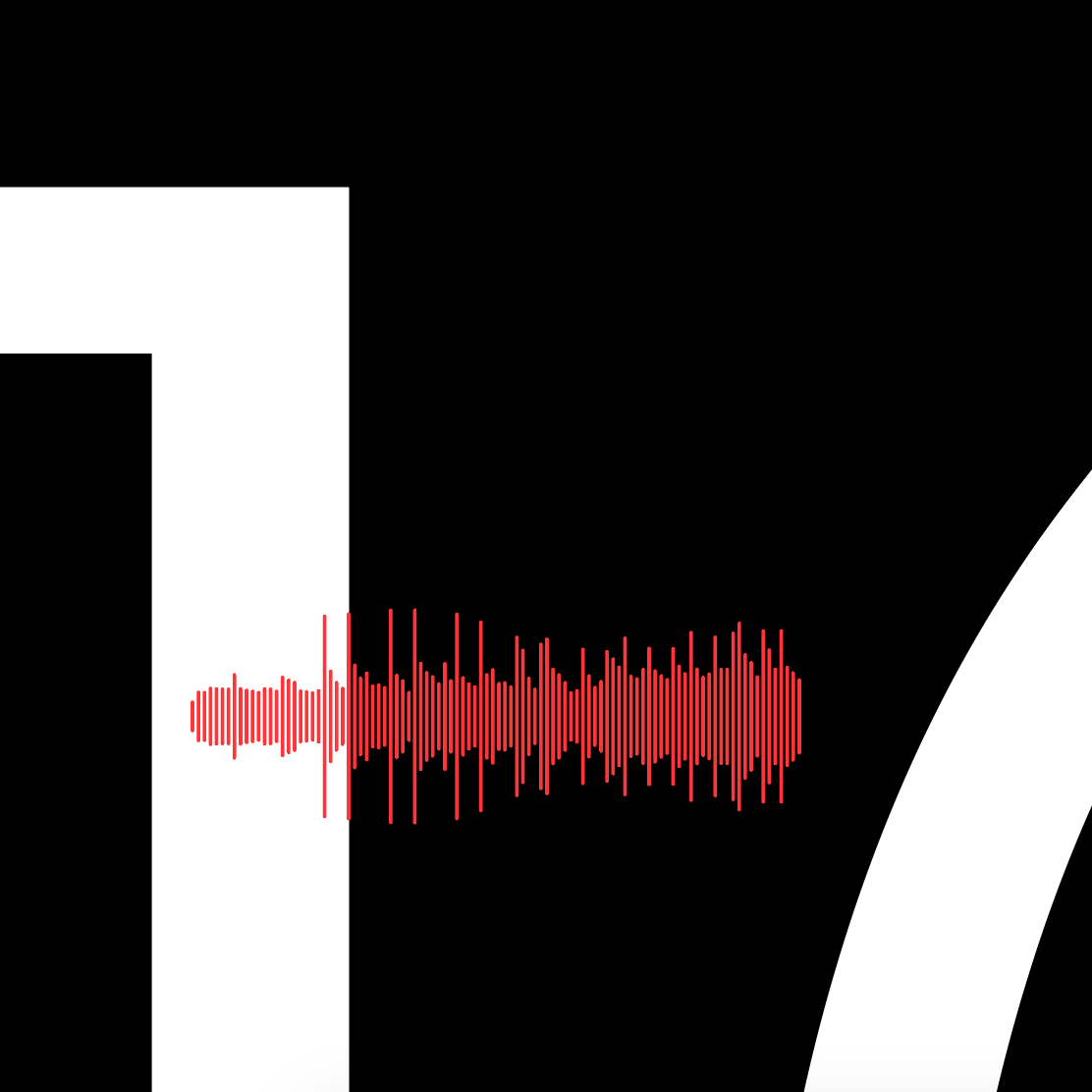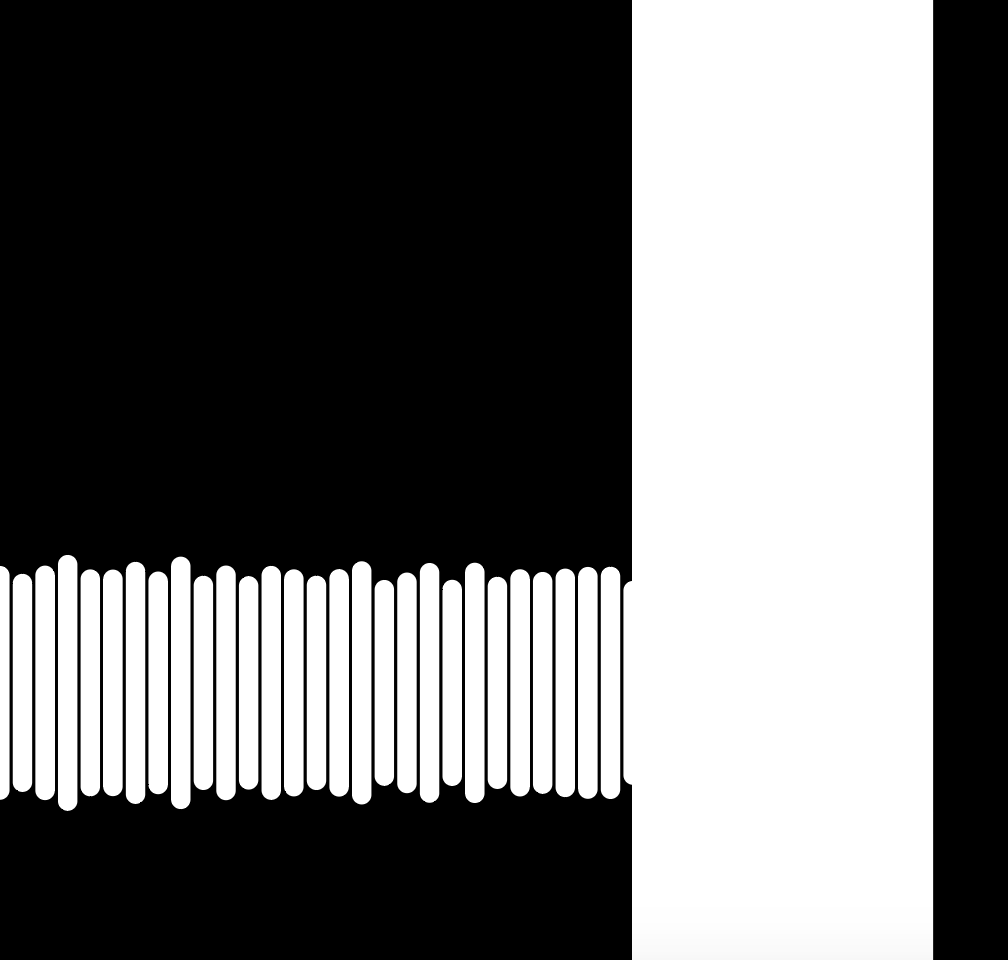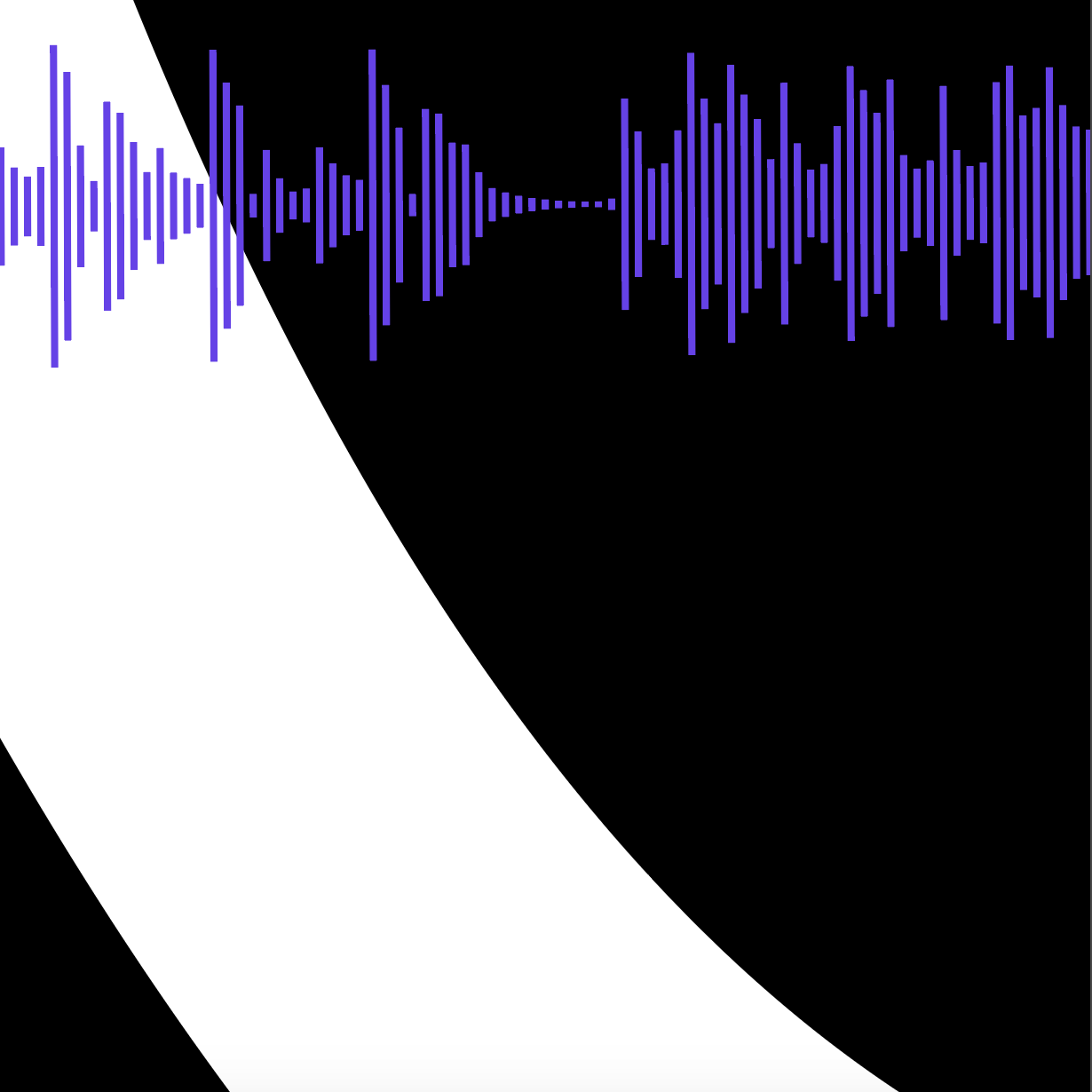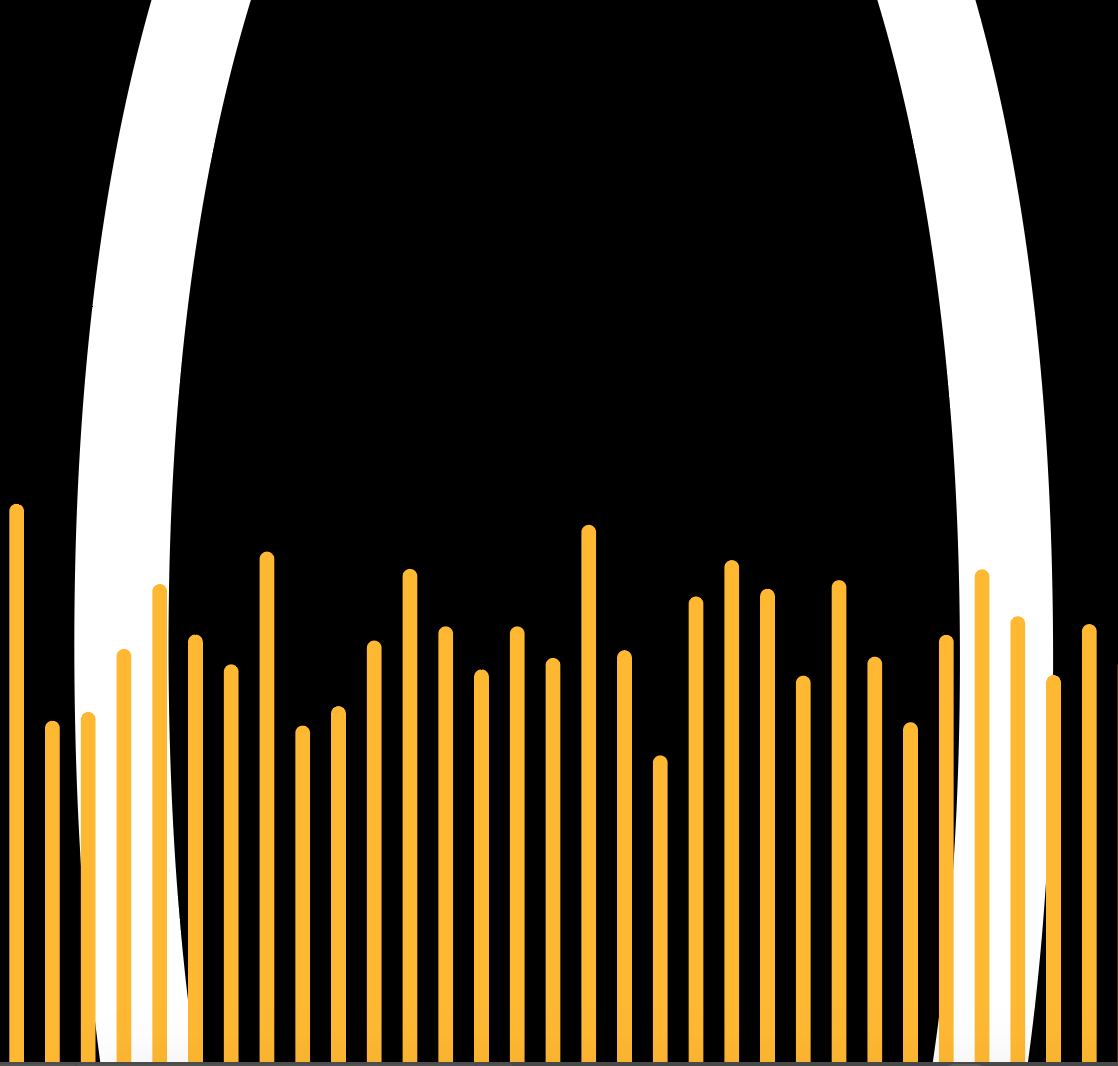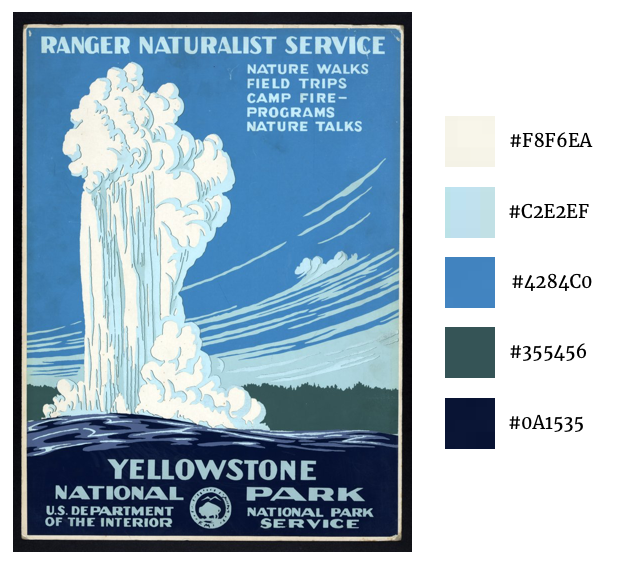I recently found some music that I made in college, including the very first tracks I ever made. This academic year will mark 10 years since I graduated— it’s a good time to look back at who I was and who I’ve become. For this project, we were asked to use a color palette of 6 colors to represent ourselves and create compositions with just those colors. For the work below, I used the first 10 seconds of each of the 6 early songs that I found and visualized those as wave forms. I applied color to those waveforms and then placed them on a black canvas with white text of the number 10. I sized the waveforms differently and zoomed in close to the waveform to obscure the number 10 and create compositions that sometimes skewed each/any of the components of the image.
Below the gallery, I included the image of the full canvas. Note: when actually creating the compositions, I sometimes moved/deleted waveforms and the numbers, so what’s on this canvas now is not how it was set up for the compositions.
If you want to hear any of the tracks used for this piece (and maybe try to match the track to the composition), here is a private Soundcloud link.
